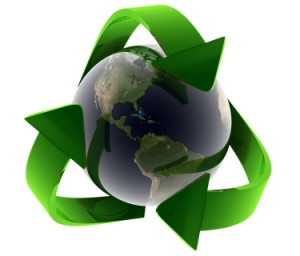The International Herald Tribune today reported that technology companies are increasingly trying to go green by cutting data center energy. It turns out as little as 30 to 40 percent of the power flowing into a data center is used to run computers. The rest goes to year-round air conditioning which keeps hardware cool. Even a 1-megawatt data center can accumulate $17 million in electric bills over a 10-year life span.
 I’m pleased action is being taken; this is one of the important issues of our time with massive “pay it forward” impact. Unfortunately, most of the technology industry hasn’t been on top of its game in the area of sustainability. Thankfully, some players – like IBM, AMD and HP – have demonstrated leadership. More companies need to ponder and build support around this issue.
I’m pleased action is being taken; this is one of the important issues of our time with massive “pay it forward” impact. Unfortunately, most of the technology industry hasn’t been on top of its game in the area of sustainability. Thankfully, some players – like IBM, AMD and HP – have demonstrated leadership. More companies need to ponder and build support around this issue.
The Herald Tribune article included some interesting comments relative to communications, public relations and going green. “So with energy costs high and environmental friendliness making for good public relations, more technology companies are touting ways they are “greening” data centers.” Reporter Brian Bergstein went on to say, “But it is a lot easier to put out a press release than to build a data center with a significantly smaller environmental footprint.”
There’s the rub. As professional communicators, we must lead and inspire management to approach corporate “green alignment” with thoughtfulness and credibility. The key is to build consensus around a legitimate green position, back it up with substance and not overplay it.
As tech companies start wearin’ the environmental green, they have to take care not to strut more stuff than they actually have. Dell’s “Plant a tree” initiative, for example, had a public backlash. Publications such as Computing said the initiative looked more like a marketing ploy than a serious carbon-neutral program. Dell didn’t say whether it was donating any funding to the program to cover the emissions generated by manufacturing its computers. This would have been the more substantive move.
The lesson to remember is that “green alignment” must be a legitimate outgrowth of a company’s core business. Better to do a little bit in this area – and make it real – than over-promise, grandstand and have it linked to vaporware.
Let’s make sure technology companies go green without getting a black eye.
 hat’s right, Wal-Mart, according to a new report issued by the Ceres investor coalition of Boston.
hat’s right, Wal-Mart, according to a new report issued by the Ceres investor coalition of Boston.